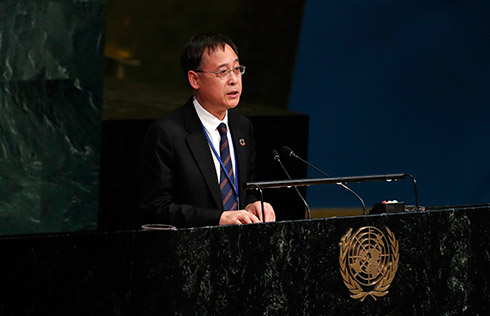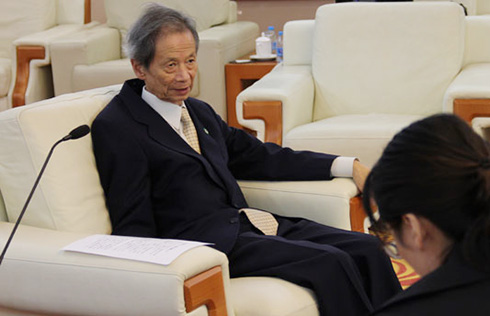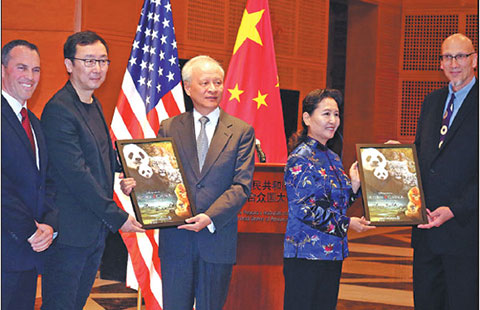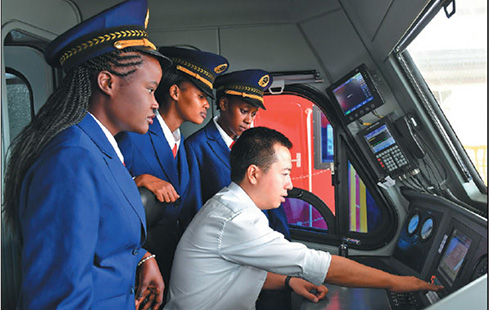Increasing rewards of China-Australia FTA offer bright spot amid global uncertainty
SYDNEY - Almost a year on from the China-Australia Free Trade Agreement (ChAFTA), it is clear that the landmark deal is helping to underpin the bilateral relations amid an increasingly uncertain world.
Speaking in Parliament just before the summer recess, Australian Foreign Minister Julie Bishop said the national interest is best served by developing strong relationships with major allies and partners, particularly on the economic front, such as the ChAFTA.
"China is Australia's largest trading partner and the China-Australia Free Trade Agreement will play an important role in diversifying our bilateral trade and investment, bringing substantial benefits to both countries," Bishop told Xinhua.
"Greater economic cooperation between our two countries will deepen political and other ties and create a stronger platform for future strategic and security cooperation."
The future is indeed very bright for the two economies that are natural, highly complementary economic partners, Chinese Ambassador to Australia Cheng Jingye said.
As more dividends from the ChAFTA come to fruition and greater synergy is being built between China-proposed Belt and Road initiative and the Northern Australia development strategy, China-Australia investment and business cooperation will be surely taken to a new high, Cheng said.
ChAFTA's growing contributions to China-Australia ties form a bright spot in the past year that has been hit by uncertainty from events such as Brexit.
Chafta rewards rebuke anti-globalisation
After entering into force on December 20, 2015, more than 85 percent of Australia's goods exports to China (by value in 2015) now enter duty free or at preferential rates thanks to the agreement, and that percentage is expected to continue to rise in the coming years.
Australia's imports from China have also grown by 7.9 percent between the 2014/15 and the 2015/16 Australian financial years to account for 18.4 percent of all imported goods, far ahead of second placed Japan at 13.6 percent, Australia-China Relations Institute at the University of Technology, Sydney (UTS) deputy director and professor of economics James Laurenceson told Xinhua.
Despite the value of Australia's exports declining due to global pressures on key commodities over the past two years, services exports have surged 20 percent in the 12 months to June 30, 2016. Currently, Australia's education sector ranks third, while tourism exports rank fifth for a combined A$35 billion ($26.14 billion) revenue boon.
As China's middle class grows, those two sectors in particular are expected to grow further. In the year to September 2016, Chinese inbound tourists accounted for 1.1 million arrivals, up 22 percent on 2015, spending a staggering A$9.1 billion ($6.80 billion).
"China is expected in the 2017/18 year to overtake NZ as our largest source of tourist arrivals and some numbers might even suggest that's already happened," Pricewaterhouse Coopers (PwC) Asia practice leader Andrew Parker said.
"So whichever way you look at it, Chinese tourists are an extremely important component of (the Australian) economy."
Further gains
Tourism offers the best advertisement for Australian goods and services into the Chinese market. With Air China and other Chinese airlines increasing services into Australia, there's no doubt merchants are eyeing more customers.
What's better news for newcomer to the Chinese market Kooks Wine, China surpassed Britain and the United States to be Australia's largest market for wine in 2016.
Kooks, a social enterprise that contributes at least one percent of turnover to a charity or social program, is eyeing to export their Wild Reserve label - which features the face of a Giant Panda - into Chengdu in 2017.
"From a wine point of view, it's more of an entry level, starting point to meet with the Chinese demand for value pricing," Kooks director Chris Tucker told Xinhua, adding that at least one percent of sales turnover in China will go towards protecting endangered animals.
Relationship for the longer term
While there are concerns in the Asia-Pacific over uncertainty, Parker, like Bishop, argues that "the best security bet we have is a strong economic relationship with our largest trading partner."
"In fact, the economic growth that's happening in the whole southeast Asia corridor, much of it with Chinese and Japanese money now being invested into those regions, is actually a good thing for those economies but it's also a good thing for Australia," Parker said.
"And so the investment that China is making in infrastructure in the region ... at the end of the day, that infrastructure is absolutely vital to the economic development of the countries concerned, and that economic development is absolutely in Australia's interests to see that it happens."


























